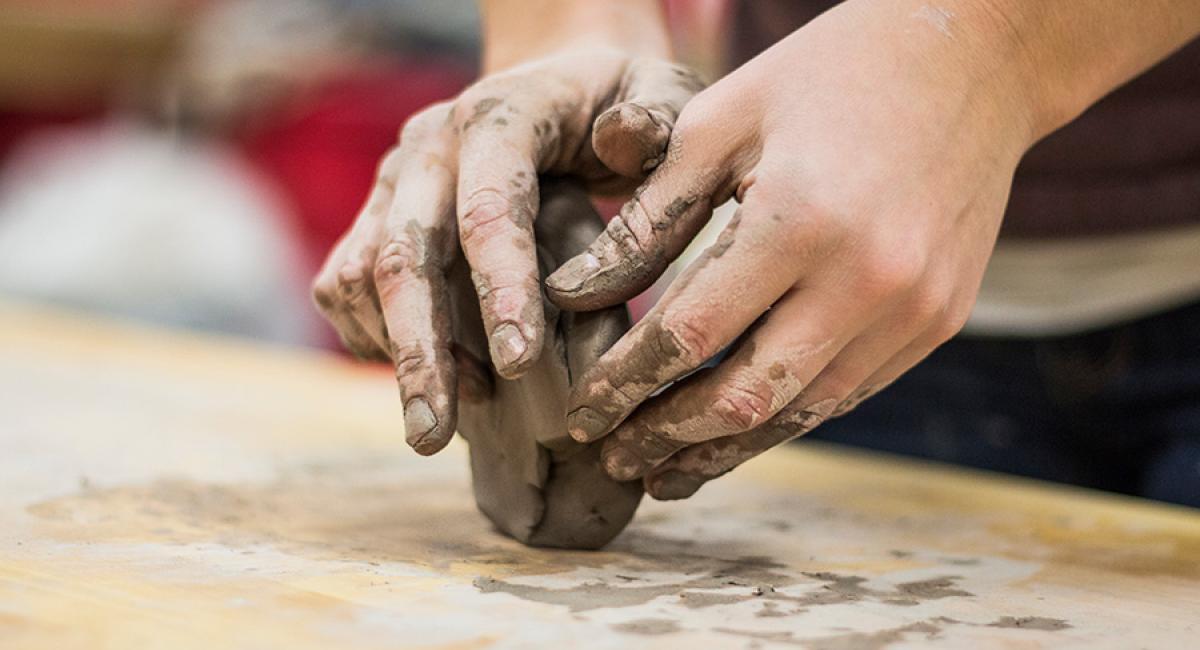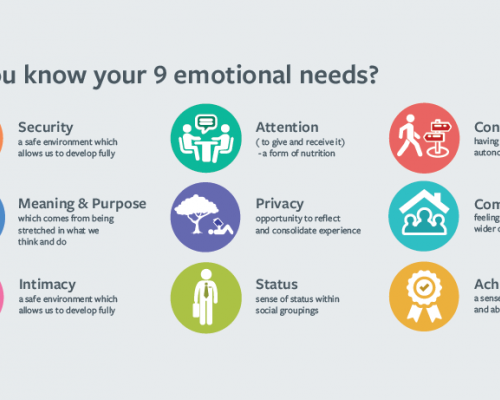Handle with care
Aric Sigman explains why craft-based skills are as important as academic ones, and need to be taught in all schools.
Craft-based curriculum subjects have never had the cachet that more academic subjects enjoy. Yet the practical curriculum has consistently been found to confer more than the skills learned.
Research from unrelated diverse disciplines clearly indicates that practical and craft-based education develops a more general capacity to function and work in other areas — in other words, competencies are transferable. A curriculum primarily based on craft activities cultivates precisely the cognitive and physical experiences necessary for full intellectual development. For example, making jewellery involves practical hand-craft and aesthetic skills, but it also involves knowledge of metallurgy, mathematical skills, and calculations involving temperature and volume – all linked to cultural skills.[1]
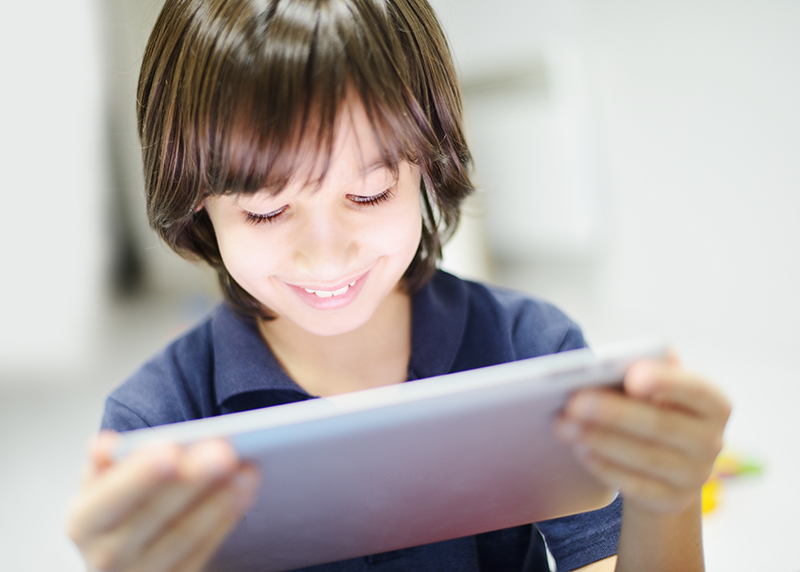
Yet, increasingly, children and young adults are spending more and more time experiencing a virtual world as opposed to a three-dimensional real world during key years of their cognitive development. This has been the result of dramatic increases in time spent in front of screen technology (ICT).[2],[3],[4] Researchers have found a link between use of computer games (more than a third of 10-year-olds in England play computer games for more than three hours a day) and lower attainment in reading and literacy.5 In another study of 10,000 children, using a standard test of perceptions of volume and weight (which are considered a fairly robust indicator of cognitive development), researchers have concluded, "The performance of students has recently been getting steadily worse. An 11-year-old today is performing at the level an 8 or 9-year-old was performing at 30 years ago ... in terms of cognitive and conceptual development. ... The most likely reasons are the lack of experiential play in primary schools, and the growth of a video-game, TV culture. Both take away the kind of hands-on play that allows kids to experience how the world works in practice and to make informed judgments about abstract concepts."[6],[7] Television is eclipsing "by a factor of five or ten the time parents spend actively engaging with children".[8]
The consequences of a software-instead-of-screwdriver-society are already being observed in the work place. Senior engineers and car mechanics have noted a recent and noticeable decline in the ability of junior engineers (at a major US national scientific laboratory) and apprentice or work placement mechanics to conceptualise straightforward mechanical problems. It was observed that, while the young people concerned had more than enough intelligence to do the work, they seemed to have missed certain areas of cognitive development because "they hadn't held a spanner or tinkered with a simple engine".[9]
Recent advances in neuroscience and other fields are offering new insights into how and why a practical curriculum has wider benefits than were previously expected. New research is finding that using tools as in craft activities involves the use and strengthening of "widely distributed, yet highly interactive, [brain cell] networks". Such tool use also stimulates "social, cognitive, perceptual and motor processes". By using tools in this way, mirror neurons — specialised brain cells involved in observational learning and/or copying by example are activated. This is part of a greater civilising process, which serves "as a critical mechanism for the cultural transmission of skills".[10]

The same phenomenon has just been found in a study of primates. Using tools activated mirror neurons involved in learning through observation. But tool use also seemed to 'integrate' the learning activity in a physiological way "as if the tool were the hand of the monkey and its tips were the monkey's fingers". The brain's trick is to treat tools as just another body part. When a primate learns to use a tool, its brain must code brain cells not only to move the hand but also to make the tool manipulate an object, a much more cognitively complex task.[11] Tool use in crafts appears to 'exercise' the brain in a variety of ways that go far beyond the capacities used for the specific task at hand. "The capacity to use tools is a fundamental evolutionary achievement," conclude the researchers.
Even in a computer-driven world, these threee dimensional practical skills are an integral part of the most cutting-edge international space-age technologies. The International Space Station, a joint collaboration among America, Russia, Europe, Japan, Canada and Brazil, is the most expensive object ever assembled by mankind. The £70 billion structure – a giant network of pressurised cabins, solar panels and radiators – is now in its 10th year of construction and about 70 per cent complete. The design, development and construction of the Space Station have been dependent on a profound understanding of the three-dimensional real world, along with skills of classic hand use of tools.[12] Recently, the crew of the Space Shuttle Endeavour carried out a record five spacewalks on their arduous 12-day visit to the 200ft-long space station. The entire project relies on highly educated astronaut 'mechanics' hanging precariously 250 miles above the Earth, working on the exterior components of the International Space Station as it hurtles through space at 17,000mph.
Albert Einstein stated, "Learning is experiencing. Everything else is just information", suggesting that we must 'experience' learning by making use of our sensory systems. Most human beings find learning easiest when they begin a learning experience with a hands-on, minds-on activity. At nearly all stages of life, we learn a great deal about our environment (objects, other people, etc) via our universal human preference to touch, to learn more about an object. While touching an object, most higher-order mammals will also turn it, twist it, view it from a number of other positions, etc, as a means of drawing out the most meaningful clues, cues, and relevant information needed for arriving at conclusions concerning the object. Teenagers and young adults learn in the same way.
Hands on
Another way to consider the benefits of craft activities is by looking at the primal and central role of hands in learning and creation. Frank R Wilson, a neurologist at the University of California School of Medicine, considers the hand a "musculoskeletal organism", emphasising the centrality to intelligence of our human hand and how crucial the manipulation of the hands are to cognitive learning. The human hand should not be regarded as a mere 'appendix', but rather, a fundamental part of the way we create.[13],[14] It is a highly evolved mechanism responsible for the high level of adaptation and survival in humans and is particularly sensitive to perceiving and transmitting exceedingly sophisticated information to the brain.[15] The inter-relationship between the hand and brain constitutes an integrated system, which seems genetically programmed. For instance, the learning brain receives high levels of vital information through the sensations and movements of the hands.[16] Research on 10-week-old fetuses indicates that nerve connections from the hands to the brain develop before the connections that allow the brain to control the hands. And the fetus's hand movements appear to influence the way that the brain physically develops in the womb.[17]
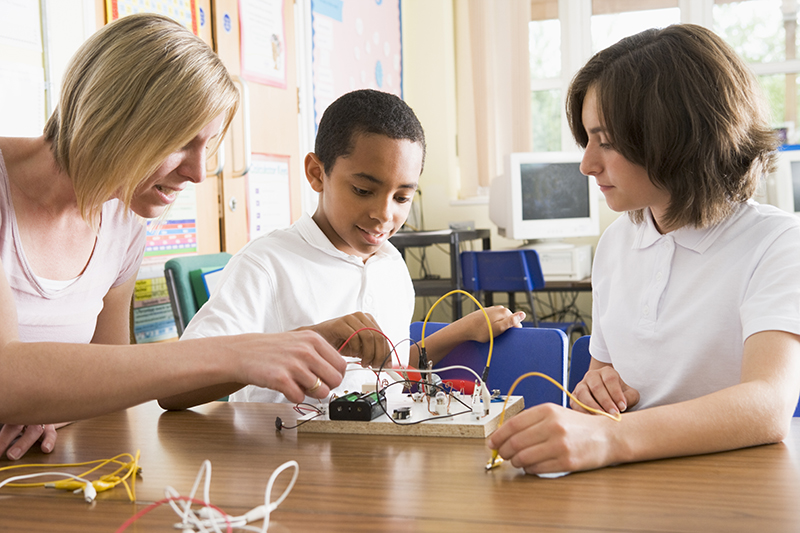
Elements of hand use such as movement velocity, direction and mode of coordination in craft activities are reflected in 'robust' brain activity.[18] This hand-to-brain relationship is so strong that the American Academy of Neurology has just reported that hand stimulation can be used therapeutically to improve brain function in adults.[19] It is now thought that only by manipulating real objects in real space is an evolutionary imperative satisfied. And this is why 'hands-on' exploration seems critical for the development of understanding and inventiveness.
Sustained attention
The ability to stay focused and on-task is of huge importance in daily life. We know that sustained attention, critical to the ability to concentrate, and self-regulation are effectively cultivated and reinforced through a craft-based curriculum, especially one in which nature plays a part (see later). Indeed, the process of 'start-to-finish' learning also cultivates deferred gratification vital to impulse control. Although intelligence is generally thought to play a key role in children's early academic achievement, aspects of children's self-regulation abilities — including the ability to alternately shift and focus attention and to inhibit impulsive responding are uniquely related to early academic success and account for greater variation in early academic progress than do measures of intelligence. Despite the current focus on teaching specific content and factual information even in pre-school and early primary education, these findings indicate that, without a simultaneous focus on promoting self-regulation skills, many children are likely to struggle to keep pace with the academic demands.[20] This distinction between sustained and divided attention is the subject of increasing concern because of the dramatic increase in younger people multi-tasking with different electronic media: social networking online, flicking their eyes from laptop to TV screen and back again, or flipping between channels to keep up with two simultaneous shows at once.[21],[22] Brain imaging now reveals that multitasking activates a different brain region (the striatum) from the one used when learning one thing at a time (medial temporal lobe) and this is a significant hindrance to learning.[23]
The neuroscientists who carried out this research are describing the benefits of modern multitasking as "a myth ... The toll in terms of slowdown is extremely large — amazingly so... You will never, ever be able to overcome the inherent limitations in the brain for processing information during multitasking."[24] In the new world of greater two-dimensional learning, there are growing links between time spent in front of computers and television screens — a medium which erodes the ability to pay sustained attention — and learning problems, reading ability and lower academic and occupational achievement.[6],[25] A study of 15-year-old students in 31 countries concluded that those using computers at school several times a week performed "sizeably and statistically significantly worse" in both maths and reading than those who used them less often.[18]
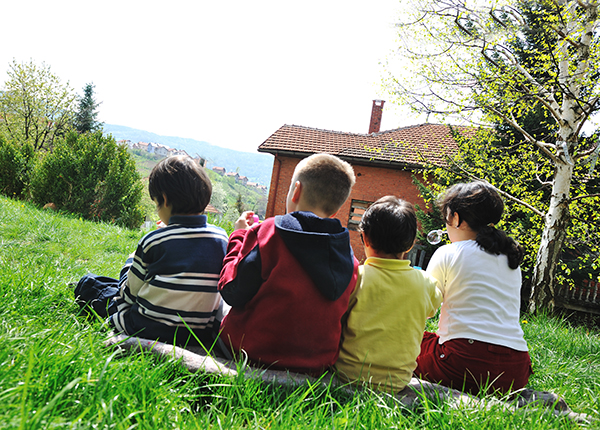
One main area of interest is the effect of nature on the ability to pay sustained attention. Some scientists now report that modern activities and situations involving prolonged or intense use of our attention cause an attentional 'fatigue' to set in. Interestingly, a study in the American Journal of Public Health reports that, in modern societies, "It becomes increasingly difficult to pay attention and inhibit impulses; that is, the behavior and performance of individuals without ADHD [attention deficit hyperactivity disorder] temporarily take on many of the characteristic patterns of ADHD."[26] Exposing children with ADHD to outdoor greenery significantly reduces their symptoms. Scientists evaluated the effects of 49 after-school or weekend activities conducted in green outdoor settings versus those conducted in both built outdoor and indoor settings. The results were highly impressive. And the effect was consistent across age, gender, socio-economic status, and type of community, geographic region and diagnosis. In fact, the greener the setting, the greater the relief from symptoms. The researchers also pointed to substantial research conducted among people without ADHD, showing that inattention and impulsivity are reduced after exposure to green natural views and settings. So, a growing number of researchers now believe that, for most of us, being exposed to greenery has general, widespread benefits for our ability to pay attention.[27]
Storytelling
It isn't just craft-based skills that are erroneously downgraded in schools. Storytelling has never been thought of as a 'heavyweight' academic activity, yet cognitive and neuroscientists are revisiting this 'folksy' tradition and reinforcing what school inspectors have noted: the benefits of storytelling go well beyond the story. Storytelling involves considerable cognitive demands: imagery, thinking ahead with plot and narrative, vocalisation, performance, listening and interpreting. For example, when the brain imagines, it increases activity, literally forming new dendrites and synaptic connections. Imagery therefore speeds communication within the cells and between the cells in the brain. Imagery-building skills from oral word 'paintings' involve a process of conscious thought that transfers to reading imagery skills. If you visualise what you hear, you facilitate the ability to visualise what you read. Storytelling, probably the oldest form of narrative in the world, is not the same as reading aloud, because in storytelling, the interaction between teller and listener is immediate, personal, active, and direct.[28]
Cognitive multi-gym
The neuroscientist Michael Gazzaniga locates the storytelling 'machinery' in the brain's left hemisphere: the function of "the Interpreter", as he calls it, is to identify patterns of connection between different brain modules and correlate them with events in the external world.[29] The activity, internal and external, is wound into a single narrative thread of subjective experience. This is why storytelling provides excellent cognitive exercise — in neurological terms it is a cognitive multi-gym. One example of how storytelling may have unexpected effects on neurocognitive functioning is seen in a Canadian study. Helping children to develop their storytelling abilities was linked to their success in maths years later. This is a good example of how the brain often benefits from one form of stimulation, later enhancing skills you would normally assume come from a completely different form of stimulation.[30] Most children today are exposed mainly to imposed imagery: television, DVDs, computer-based images, and even picture books. The brain's function is reduced to taking in something that is already in front of the eye, rather than creating an image of something that is not apparent.
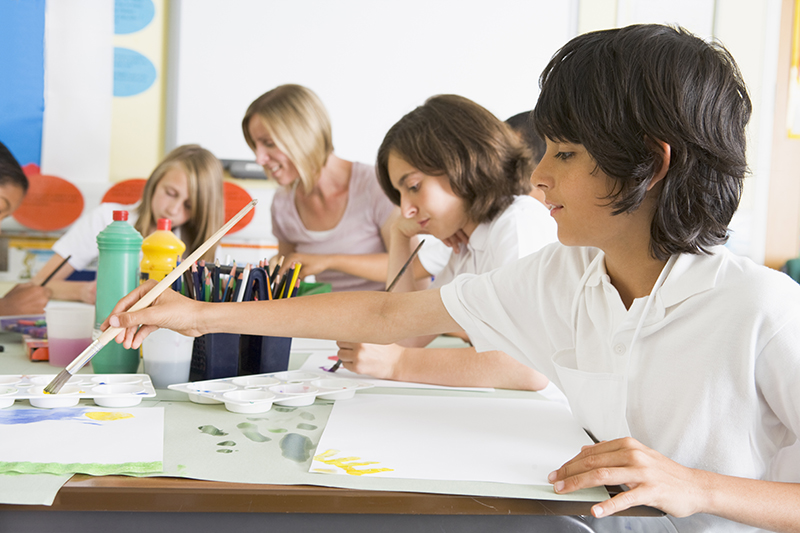
During the 1970s and 1980s, Roger G Schank, former head of the Artificial Intelligence Laboratory at Yale University, was examining the issue of how we think, and how our thinking processes influence our behaviour. He was attempting to develop artificial intelligence programs for computers through this work. What he found was that the human brain is programmed to think in terms of stories. A human brain may receive thousands of pieces of information daily. Most of it we can't retrieve, even minutes later, while other information can stay with us for years, and we can easily recall it. Why? Because the information that we tend to remember is presented in the context of a story about the information, person, or event. Schank states, "Stories give life to past experiences; stories make events in memory memorable to others and to ourselves." In other words, memories are really stories, which can be recalled at a later time. Pupils who are exposed to information in the context of a story can better recall it later.[31]
For these and so many more reasons, it is vital that a greater practical curriculum is incorporated into both mainstream and special education. As now seems clear, the future may be digital but experience of tangible three-dimensional qualities remains absolutely vital.
This article first appeared in "Human Givens Journal" Volume 15 - No. 3: 2008
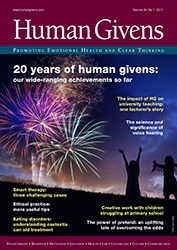 We need your help – this article originally appeared in the Human Givens Journal which takes no advertising at all, in order to maintain its editorial independence.
We need your help – this article originally appeared in the Human Givens Journal which takes no advertising at all, in order to maintain its editorial independence.
To survive it needs new readers and subscribers – if you have found the articles, case histories and interviews on this website helpful, and would like to support the human givens approach – please take out a subscription or buy a back issue today.
References
- Press, M (2008). Professor and Chair of Design Policy, University of Dundee. Personal communication.
- Sigman, A (2007). Remotely Controlled: how television is damaging our lives. Vermilion, London.
- Sigman, A (2007). Visual voodoo: the biological impact of watching television. Biologist, 54, 1, 14–19.
- Sigman, A (2008). Special Effects: the biological implications of watching television. Institute of Biology, London, 7 Feb.
- PIRLS The Progress in International Reading Literacy Study (2007). November 2007.
- Shayer, M, Ginsburg, D and Coe, R (2007). Thirty years on – a large anti—Flynn effect? The Piagetian test volume & heaviness norms 1975–2003. British Journal of Educational Psychology, 77, 1, 25–41.
- Shayer, M (2008). Intelligence for education: as described by Piaget and measured by psychometrics. British Journal of Educational Psychology, 78, 1, 1–29.
- The Children's Society (2008). Good Childhood Enquiry.
- Wilson, F (1999). An interview with Frank Wilson by Jeff Miller. University of California at San Francisco Magazine, 19, 1, 42–9.
- Johnson—Frey, S (2004).The Neural Bases of Complex Tool Use in Humans. Trends in Cognitive Sciences. Elsevier.
- Umiltà, M A et al (2008).When pliers become fingers in the monkey motor system. Proceedings of the National Academy of Science, 105, 6, 2209–13.
- NASA/ISS, 2008. Report and photographs of International Space Station construction. Published 26 March, 2008.
- Wilson, F (2005). Interview with R Smith. Metalsmith. Summer, 12–15. 14 Wilson, F R (2005). Image, design and graphic angst in the digital age. Biennial conference of the American Institute of Graphic Arts (AIGA). Boston, Massachusetts, 15–18 September. Reported in EYE: International Review of Design, 58, December.
- Wilson, F R (2005). Image, design and graphic angst in the digital age. Biennial conference of the American Institute of Graphic Arts (AIGA). Boston, Massachusetts, 15–18 September. Reported in EYE: International Review of Design, 58, December.
- Bensmaia, S S et al (2008). The tactile perception of stimulus orientation. Somatosensory and Motor Research, Feb.
- Bobich, L R et al (2007). Spatial localization of electrotactile stimuli on the fingertip in humans. Somato—sensory and Motor Research, 24, 4, 179–818.
- Hepper, P G, Wells, D L and Lynch, C (2005). Prenatal thumb sucking is related to postnatal handedness. Neuro—psychologia, 43, 313–15.
- Fuchs, A, Jirsa V K, and Kelso, J A (2000). Theory of the relation between human brain activity (MEG) and hand movements. Neuro—image 11, 5, 359–69.
- Rosenkranz, K et al (2008). Sensorimotor reorganization by proprioceptive training in musician's dystonia and writer's cramp. Neurology, 70, 304–15.
- Blair, C, and Razza, R P (2007). Relating effortful control, executive function, and false belief understanding to emerging math and literacy ability in kindergarten. Child Development, 78, 2.
- Kaiser Family Foundation (2005). Generation M: media in the lives of 8–18—year—olds. Kaiser Family Foundation, 9 March.
- Childwise Monitor UK, 2007/2008.
- Foerde, K et al (2006). Modulation of competing memory systems by distraction. Proceedings of the National Academy of Science, 1, 103, 31, 11778–83.
- Myers, D et al (2006). Multitasking and task switching. Brain, Cognition and Action Laboratory, University of Michigan.
- Johnson, J G et al (2007) Extensive television viewing and the development of attention and learning difficulties during adolescence. Archives of Pediatric and Adolescent Medicine, 161, 480–6.
- Kuo, F E and Taylor, A F (2004). A potential natural treatment for attention—deficit/hyperactivity disorder: evidence from a national study. American Journal of Public Health, 94, 9, 1580–6.
- Taylor, A F, Kuo, F E and Sullivan, W C (2001). Coping with ADD: the surprising connection to green play settings. Environment and Behavior, 33, 1, 54–77.
- ERIC (1988). Storytelling: its wide—ranging impact in the classroom. Published in September by the ERIC Clearinghouse on Reading, English, and Communication and funded at least in part with federal funds from the US Department of Education.
- Gazzaniga, M S (2005). The Ethical Brain. Dana Press.
- O'Neill, D K et al. Preschool children's narratives and performance on the Peabody individualized achievement test – revised: evidence of a relation between early narrative and later mathematical ability. First Language, 24, 149–83.
- Schank, R C (1990). Tell Me a Story: a new look at real and artificial memory. Scribner, NY.
Latest Tweets:
Tweets by humangivensLatest News:
SCoPEd - latest update
The six SCoPEd partners have published their latest update on the important work currently underway with regards to the SCoPEd framework implementation, governance and impact assessment.
Date posted: 14/02/2024
2024 Conference
Our next in-person HGI Conference, is being held on the weekend of 20th and 21st April 2024




